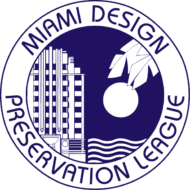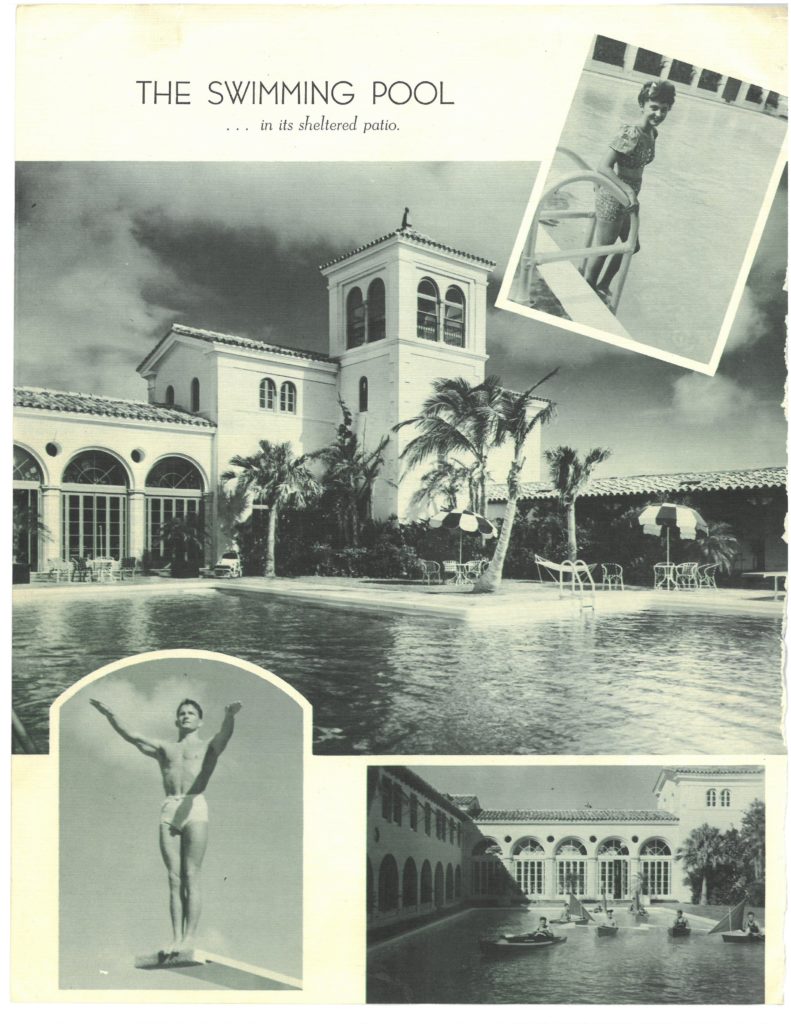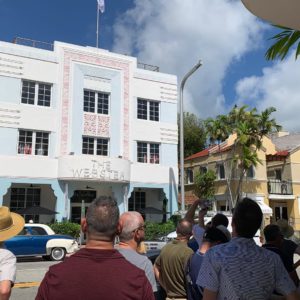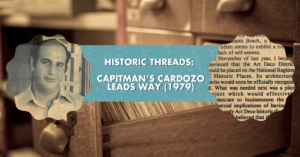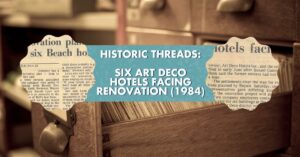Originally opened in 1930, The Surf Club located at 9011 Collins Avenue was designed by pioneering Miami architect Russell Pancoast. It was the ultimate place to be seen. Located between Miami Beach and Bal Harbour, The Surf Club was built by tire tycoon Harvey Firestone during the Great Depression. In the 30’s it was the playground of the rich and famous. It was obvious that the Depression was not hard hitting at Miami Beach society, nor was it damaging tourism that much either. There was liquor on the beach during prohibition, kayaks in the swimming pool, black tie Gatsby-esque dinners and lavish themed galas, one time with elephants, another with 300 tables made entirely of ice. Alfred Barton, the social paragon of Collins Avenue, was chosen to run the Surf Club. He loved it so much he continued to run the club into the 1970’s. Through the years as the club continued to gain popularity, it hosted celebrities such as Gary Cooper, Noel Coward, Douglas Fairbanks Jr., The Rat Pack, Elizabeth Taylor and Douglas MacArthur. The Duke and Duchess of Windsor and Tennessee Williams were regular guests. But its most famous guest, in 1946, was Winston Churchill, who spent his time at the club painting seascapes. Churchill is believed to have made an oil painting of the beach entitled The Surf Club, Miami, from the deck of one of the cabanas.
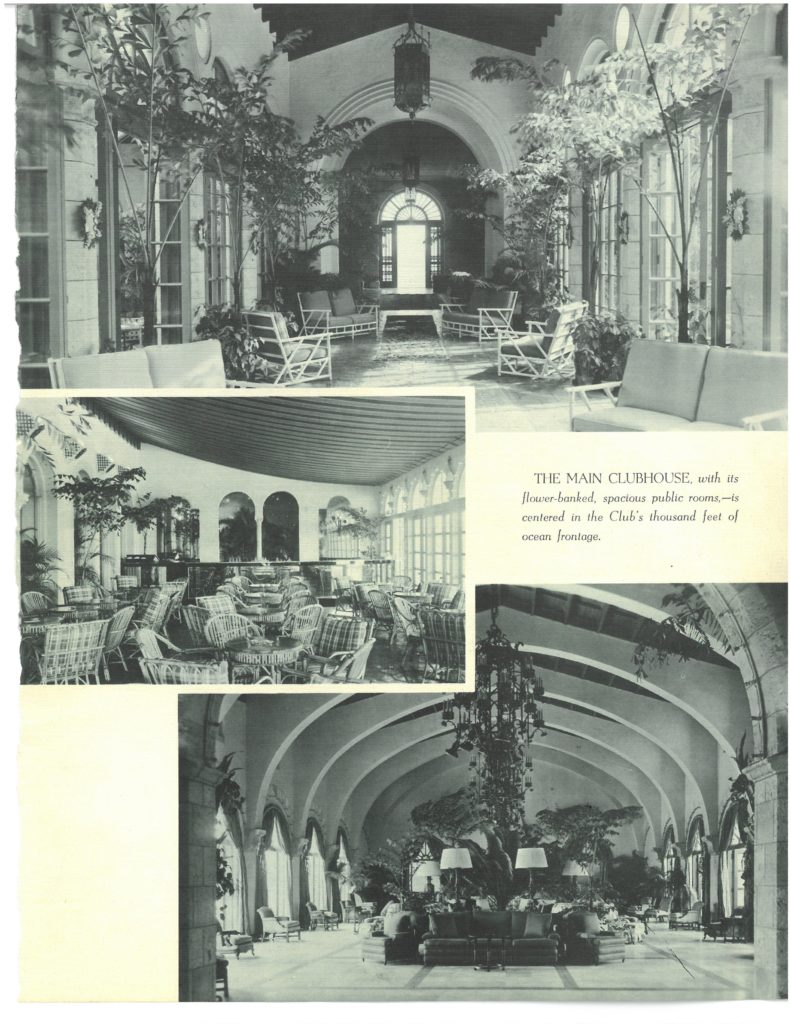
is centered in the Club’s thousand feet of ocean frontage.
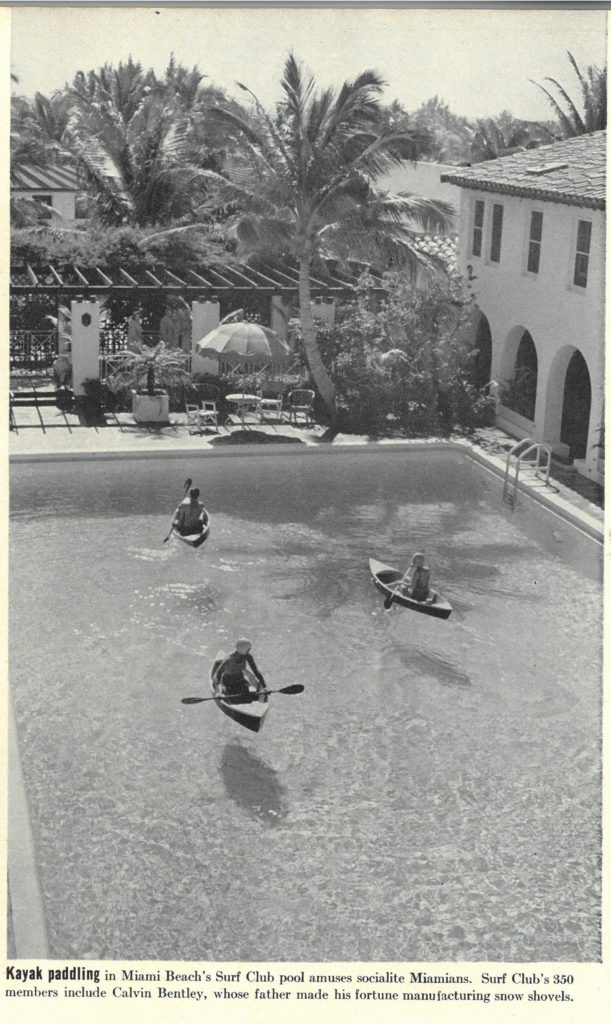
In 2016 the building, legally protected as a designated historic structure by Miami-Dade County, was completely renovated. Opened in 2017, it consists of a new 285-unit luxury condo-hotel, restaurants, private club, four pools, a gym, gardens, and a park. The new units, obeying Surfside’s height limits, are spread mostly throughout three twelve story, glass-sheathed towers on the beach side. The ambitious plan was embraced by preservationists, town leaders and the Surf Club’s 122 remaining owner-members because it would embark on a radical renovation of the landmark original 1929 building. The developers proposed to strip away any later additions, including an entire service wing and a long wall along Collins Avenue that would hide the club from view. By the end, the building as it stands today appears much as the pioneering Miami architect Pancoast designed it, in the highly ornate, and authentically detailed Mediterranean style that was in vogue. Completely restored with high beamed and vaulted ceilings, majestic colonnades, massive fireplaces, original murals, light fixtures and doors. The developers also rebuilt the club’s famed horseshoe-shaped row of wooden cabanas, a key condition of the county preservation board’s unanimous approval of the project. Architect Kobi Karp, whose firm handled both the restoration and the design of the new buildings, said the process was aided by the availability of Pancoast’s original plans, which elaborated details as minute as moldings and door knobs.
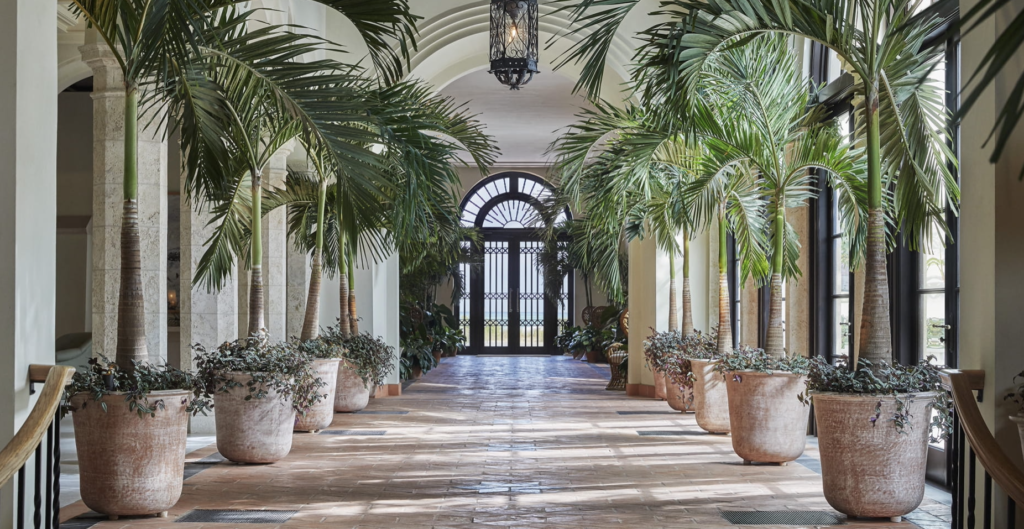
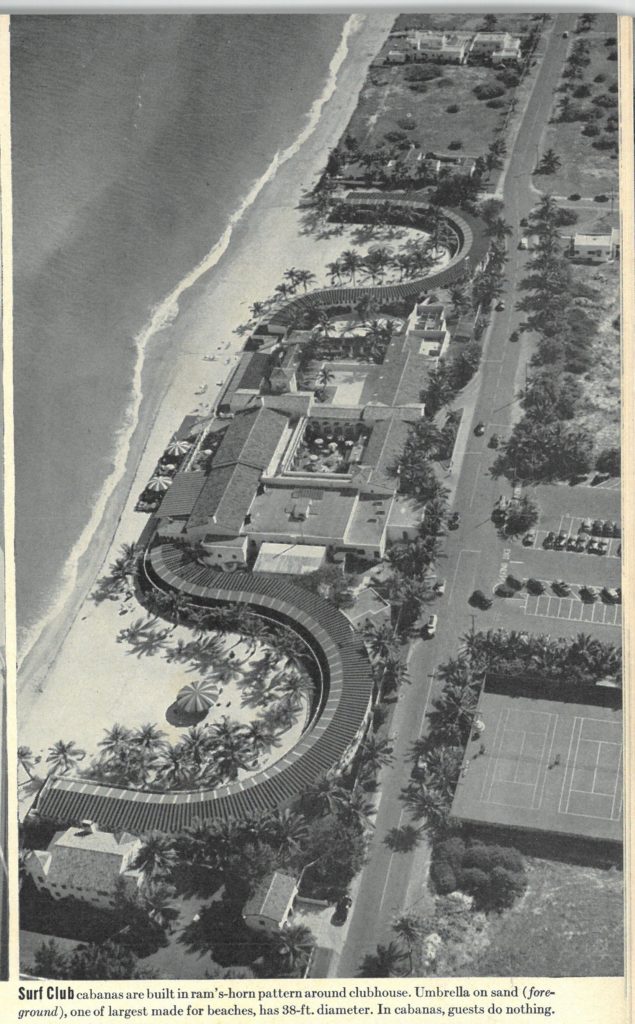
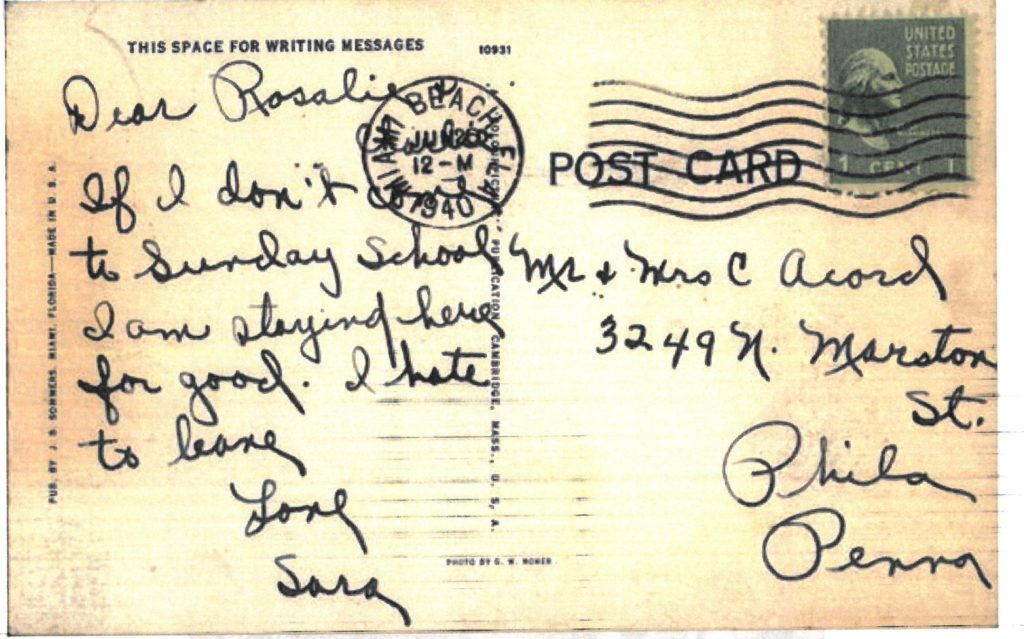
Postcard courtesy of Cardcow.com
